Journal of Civil Engineering and Environmental Sciences
An investigation on the safety of children on the roads of Gaza, Palestine
Yahya R Sarraj* and Basma Bashbash
Cite this as
Sarraj YR, Bashbash B (2022) An investigation on the safety of children on the roads of Gaza, Palestine. J Civil Eng Environ Sci 8(1): 041-047. DOI: 10.17352/2455-488X.000049Copyright License
© 2022 Sarraj YR, et al. This is an open-access article distributed under the terms of the Creative Commons Attribution License, which permits unrestricted use, distribution, and reproduction in any medium, provided the original author and source are credited.The traffic safety system in Palestine needs major improvements. Traffic accident data in Gaza Strip are collected from crash reports recorded by the local Police. In many cases, roads are constructed without proper consideration of children’s needs. However, children and young kids use the roads as pedestrians, bicyclists, and occupants of vehicles. Moreover, they might choose to play on the road.
This paper aims to investigate the situation of traffic safety of children in the Gaza Strip and to recommend measures to reduce their risk. This research is based on accident statistics recorded in the period between 2008 and 2018. Analysis was carried out to determine critical locations that have a high number of accidents, focusing on accidents that resulted in casualties and fatalities of children. Results show that the highest rate of children fatalities in the Gaza Strip was on Arterial Roads.
According to the data collected in 2016, 2017, and 2018, the percentage of road traffic deaths of children are 60%, 68% and 59% respectively, which is higher than the average rate of child mortality in the world (52%) according to the world organization statistics. Gaza city has the largest number of children fatalities caused by road accidents in the Gaza Strip. This might be due to the high population density and heavy traffic.
In order to reduce road accidents for children, it is necessary to control the speed of vehicles at school zones and to provide more safety measures for children on the roads, including illuminated pedestrian crossings for children. It is very important to provide children at schools and kindergartens with proper training on how to cross the street. It is also helpful to teach them some important traffic signs.
Introduction
Gaza Strip has an area of 365 km2 and about two million people lived in the Gaza strip in 2016 (The source: The Ministry of Interior). However, in 2021 the Palestinian Central Bureau of Statistics (PCBS) estimated that the population of the Gaza Strip was more than 2.1 million (The source: PCBS). The transportation system in Gaza Strip depends on road transport. No rail lines, water, or air transport is currently available.
Gaza city suffers from the congestion of traffic on the main roads and at road intersections. This might be related to the existence of high population density and the lack of paved roads in many areas. Gaza city also accommodates several local and international institutions and attracts many visitors and commuters for several purposes.
Literature review
Children and senior citizens are the most vulnerable type of road users. In many cases they are exposed to serious or fatal road crashes with little protection. Young children cannot estimate how far a car is or how fast it is traveling. Many countries of the world are working effectively and have achieved success in reducing the risk for children on the road. However, children in many less developed countries are still exposed to a great danger on the road.
“According to the results of the 2017 Revision, the world’s population numbered nearly 7.6 billion. Children under 15 years of age represent roughly one-quarter of the world’s inhabitants (26 percent)” [1].
Figure 1 shows the percentage of the population in broad age groups for the world and by region in 2017, it displays that the populations in many regions are still comparatively young. In Asia, people under the age of 24 years form about 40%, and young children less than 15 years account for 24% of the population in 2017.
According to the Palestinian Central Bureau of Statistics (PCBS) in 2017, the population in Palestine was about 4.95 million. The percentage of individuals in the age group (0-14) was 38.9% of the total population in Palestine, 36.6% in the West Bank, and 42.6% In the Gaza Strip. Therefore, it›s higher than the average of children percentage of the population in Asia and is approaching the proportion in Africa. However, the children percentage in the Gaza Strip is higher than that of children in Africa, which is the highest rate of children in the world.
Some of the painful stories that happened to children who died in road accidents in Gaza were narrated by the father of a child: «Sara is my daughter. She was 13 years old when her life was lost on 27/11/2018 Tuesday. Sara was with four friends going to school. They had got out of a taxi and were trying to cross the road. The traffic was crowded, chaotic. There were no traffic lights, no crosswalks, just a constant stream of speeding, weaving cars, trucks, and buses. You have to dart across several lanes of traffic to get to the other side. Sara was hit and killed by a speeding bus as she tried to cross the road. The bus driver didn’t even slow down. I was at work. My wife called me to tell me the terrible news that my baby girl had been hit. You can imagine my guilty feeling. I could have driven her to school. Sara loved so many things, she loved life. She had an amazing smile. She always had time for other people more than for herself. She wanted to be a pediatric dentist, she loved kids. But she lost her childhood and even lost her life».
Overview on traffic safety
The International Transport Forum through its working group; the International Traffic Safety Data and Analysis Group (IRTAD) collects international data on road crashes. IRTAD publishes periodic traffic safety reports for 32 countries. The overall number of road deaths in IRTAD member countries increased in 2016. Road deaths reached 73,879 and 75,098 in 2015 and 2016, respectively. This represents an increase of 1.6% of road fatalities overall [2].
According to the World Health Organization [3], more than 90% of road traffic deaths occur in low- and middle-income countries, every year more than 1.25 million persons are killed by traffic crashes on the road, people aged under 15 years account for 52% of world road traffic deaths. On the other hand, between 20 and 50 million people suffer non-fatal injuries. Many of them suffer a disability as a result of their injury. Road traffic injuries cause significant economic losses. This affects individuals and their families as well as the country. WHO also indicated that most countries are affected with a cost of about 3% of their gross domestic product, as a result of road traffic crashes. Statistics also indicated that less than 25 years old of young males are 3 times as likely to be killed in a road traffic crash as young females.
Statistics and figures of traffic accidents
Figures and statistics of traffic crashes show the danger imposed on young children. Figure 2 shows road traffic injury mortality rates per 100,000 children by WHO region and country income level, 2004. Data show that worldwide, the road traffic death rate among children is 10.7 per 100,000 populations. However, in South-East Asia, the rate is 7.4 per 100,000 populations. On the other hand, in Africa, it is 19.9 per 100,000 population. In Europe, road traffic injuries account for around 20% of all childhood injuries [4] Figures 3,4.
It is clear from Figure 5 that children under 19 years are at greater risk as pedestrians and vehicle occupants.
Policies and initiatives to protect children
The World Health Organization (WHO) provides technical support to countries. This is made in collaboration with parents. The aim is to reduce fatalities and injuries caused by road traffic crashes. An example is a collaboration with BIGRS, which is the Bloomberg Initiative for Global Road Safety. The target of this initiative is the low- and middle-income countries and cities. Another initiative was in 2017 when WHO released a road safety technical package called Save LIVES. It is a road safety technical package that focuses on Speed management, Leadership, Infrastructure design, and improvement, Vehicle safety standards, Enforcement of traffic laws, and post-crash Survival [3].
Traffic safety for children through “car safety”, can be achieved by allowing them to be seated in special seats with adequate restraints to save children. Young children must be afforded extra protection in the context of human rights as they are too young to protect themselves. According to the UN Convention on the Rights of the Child, children have the right to a safe environment. However, many children are killed or seriously injured daily on the road [5].
It is of great importance to increase the awareness of the safety of pedestrians. In the UK, the National Road Safety Committee made this possible by creating the Green Cross Code. Schools teach this Code and families are requested to teach kids road safety using the same code [6].
There are many non-governmental organizations concerned with the safety of children on the road. The road safety charity (Brake) produced interactive resources. These resources help children to produce ideas that can make streets safer [7] Figure 6.
The reality of traffic safety for children worldwide
The UK, Japan, Sweden, and other developed countries adopted road safety policies and achieved success. In 1991, the Netherlands adopted a ‘sustainable road safety’ initiative. In 1997, Sweden adopted a multi-national road traffic safety project called ‘vision zero’. This project aims to achieve no fatalities or serious injuries in the highway system. The UK adopted a strategy, which was called ‘tomorrow’s roads safer for everyone in 2000. The goal of this strategy was to reduce the number of children killed or seriously in ten years [8].
There is a great interest in the safety of traffic for children in the UK, they support the principle of “Whatever your child’s age, road safety is one of the most important lessons they’ll learn”. The UK campaigns of road safety helped to reduce the deaths of children by 90% since 1979. However, every month 6 children are still being killed and 170 more are being seriously injured. In September and October, the number of child fatalities and injuries reaches a peak value. In these two months, pupils get used to their new path to school. According to this campaign young ones should be taught that it is of great importance to always hold a grown-up’s hand and to look both ways before crossing the street [9].
In the UK, the Drive Safe & Stay Safe annual competition encourages children to make up their own songs to produce safety messages. In addition to many games to teach traffic safety for children on UK roads, like “Take the seat belt challenge” [9].
Traffic safety of children in Arab countries
In Jordan, road traffic crashes are the second leading cause of death and they constitute a great health problem [10]. In Jordan parents and drivers must therefore be adequately informed about the possible dangers of allowing children to sit in the front-seat passenger [11]. Article 38 of the Traffic Law (2008) in Jordan states that all front-seat passengers must wear seatbelts while driving otherwise they will face a 15JD fine (Paragraph 22) and that if you put a child under the age of 10 in the front passenger seat you will be subject to a fine of 15JD. Nevertheless, in the UK, legal penalties could reach up to £500, if a driver was convicted of not ensuring the safety of a child passenger using an appropriate child restraint or wearing a seat belt.
In the Kids’ Corner of Road Safety in the United Arab Emirates, one can find a selection of Videos, Games, Coloring-In, Puzzles, Stories, and Songs. Road safety continues to be a major concern in the UAE. Schools in the UAE play an important role in raising responsible road users. The children drive pedal cars in a simulated circuit within special schools to better understand the road reality. Theory sessions are also given to students making them aware of the basic road safety rules. In the end, each child receives a mock license bearing his/her picture and name [12] Figure 7.
Al-Sahili & Khader stated that “It was noted from statistics of crashes in the West Bank and Gaza Strip that it is still suffering from problematic and limitations in data, lack of accuracy, and the absence of statistical series that allows monitoring traffic crashes. Some of the observed problems are lack of sufficient information about different age groups, the absence of standardization and classification of traffic crashes, and lack of commitment by many of the relevant official departments to record accurate information about traffic crashes” [8].
In Palestine, researchers face difficulties in obtaining data from three different authorities. This is because of the complicated political conditions. However, national traffic safety trends have been produced and a study was conducted on traffic accidents in Palestine, which is the” National traffic safety profile: Palestine 1970-2015”. The research shows that there is generally a considerable increase in the number of crashes and number of injuries from 1970 to 2015, with some fluctuations due to political, demographic, and economic conditions [13]. Road Traffic safety procedures in Palestine were not significant for the past 30 years [14].
Accident statistics in Gaza strip
Gaza Strip has an area of 365 km2 with a population of about 2 million people in 2016 (The source: The Ministry of Interior). The population of the Gaza Governorate is about 626 thousand people, representing 34.4% of the total population of the Gaza Strip [15].
In Gaza Strip, no rail, water or air transport means are available. Therefore, roads are considered the only means of transportation in the governorates of Gaza.
Data analysis of accident statistics
The analysis of the available accident statistics was carried out for the period 2008 to 2018. Figure 8 shows the accident statistics collected over the years from 2008 to 2018 in Gaza Strip Governorate. Figure 9 shows the fatality statistics in this period.
The too-high population density and the poor road network in Gaza city, as well as the presence of many local and international institutions, result in traffic congestion at different spots. Therefore, it has a large number of accidents as shown in Figure 8. Gaza also has the largest number of road accident fatalities as shown in Figure 9.
Children fatalities in Gaza strip (2008-2018)
The lack of resources in terms of statistics on children’s accidents makes it difficult to cover analysis of children’s accidents over the years from 2008 to 2015 in Gaza Strip Governorate. The available data for Children’s accidents is only available for 2016, 2017, and 2018 in Gaza Strip. However, thirty-two road accidents have been recorded during the first half of 2019, involving 21 children (Source: Ministry of Transport and Communications)
Table 1 shows the children fatalities by road accidents that were collected in 2016, 2017, and 2018 in Gaza Strip.
Gaza city has the largest number of children fatalities by road accidents as shown in Figure 10. In 2016, Gaza city has 37% of total children fatalities in the Gaza Strip. This might be because it is the center of the Gaza Strip and due to the high population density and heavy traffic. Statistics show that September has a high number of children fatalities. This might be because September is the month when kids get used to their new route to school.
It is also clear that the highest rate of Children’s Fatalities was recorded in 2017 as shown in Figure 11, Table 2.
According to the data collected in 2016, 2017, and 2018 as shown in Figure 11, the percentages of road traffic deaths of children are 60%, 68%, and 59% respectively, which is thus higher than the rate of child mortality rate in the world (52 %) referring to the world organization statistics.
Beit Lahia area observed the recurrence of the highest children fatalities in the northern Gaza governorate. However, the highest rate of children fatalities was in Gaza City on several roads, including Al Karama Street (Route No. 4), Salah Al-Deen Road, Al Rasheed Road, Aoun Al Shawa Street (Route No. 8), Al Nafaq Street, Al Jala’a Street, Baghdad Street. Most of them are categorized as arterial roads and they carry heavy traffic at high speed, leading to increased road accidents.
In the Middle governorate of the Gaza Strip, the highest rate of children fatalities was on Salah Al-Deen Road, while the southern governorates (Khanyounes and Rafah) had the most cases of children fatalities on both Salah Al-Deen Road and Al Rasheed Road. The vehicle types that cause most children fatalities in road accidents are cars followed by trucks.
Electricity in the Gaza Strip is in short supply. Therefore, roads are not always illuminated at night, increasing the risk of accidents at pedestrian crossings.
Suggested solutions to reduce accidents and protect children
Children are very precious. However, experts believe that they do not have the proper skills to protect themselves. Therefore, parents and teachers are obliged to support children and teach them to do so [16].
“Road crashes are a major cause of death and injury among the young, with the risk rising as children reach secondary school age and have more independence, and young drivers and passengers facing significant risks. Danger from traffic is also a big factor in whether children and young people are able to walk and cycle to school, to the park or to see friends, and therefore their ability to be healthy and socially active” [7].
Chatterjee indicated that road safety activities and signs should be taught in a fun way. This is important to make kids understand and remember the traffic signs and rules better. This will be made easier if it was integrated with educational games. Chatterjee also indicated that children should realize that road safety is a very serious topic. He assured that adults “need to follow traffic rules strictly” in the presence of children. They must not use their mobile phone when driving with kids or perform any dangerous traffic maneuvers. This should also be applied while walking outside with young ones [17].
Common safety rules at school for children
Caring for children is not limited to parents, but the school should have a role in increasing children’s awareness of road safety, to reduce the number of child deaths in road accidents. It is not easy to keep children safe. Parents have to understand that “they cannot always be around to protect their child”. However, if parents make sure that their kids are following traffic rules their life might be easier [17,18].
- Encourage children to memories contact information: It is important to encourage young children to memories the basic information of their home address, full name, and family phone number.
- Explain to them that they should be Alert and Cautious: Young children need to be aware that leaving school alone could prove to be very dangerous.
Suggestions and solutions to reduce children’s road traffic accidents in Gaza strip
The following are suggested solutions and procedures that might help to reduce children’s road traffic accidents:
- Commit to crossing the road at pedestrian crossings while emphasizing respect for pedestrian crossing by drivers.
- Observe the speed limit, and reduce the speed at the school zone.
- Continuous maintenance of roads.
- Do not use mobile phones while driving.
- Encourage the use of traffic calming measures in order to reduce the speed in dangerous areas.
- Conduct more traffic safety education programs for all users to promote driver’s compliance with traffic laws and regulations, especially regarding children.
- Imposing penalties and deterring punishment for those who violate the law of traffic.
- Commit to using seat belts for children on board.
- Make sure to provide proper illumination at pedestrian crossings, on the road.
- Identify safe roads and places for children, and train them to use them.
- Teach children safety signs through games and mobile applications.
- Train children in schools and kindergartens to cross the street, and teach them some important traffic signs.
- Prevent heavy vehicles from using local roads.
Conclusion and recommandations
The analysis of the available statistics on traffic accidents of children in the Gaza Strip indicates that these statistics suffer from problematic and limited data. The data are not very accurate and suffer from the absence of continuous statistical series. In many cases, data are not accompanied by proper traffic flow or traffic composition counts. The available information can hardly be used to identify the cause and the exact location of accidents.
According to the data collected in 2016, 2017, and 2018, the percentage of road traffic deaths of children was 60%, 68%, and 59% respectively, which is higher than the rate of child mortality rate in the world (52%) referring to the world organization statistics.
The highest rate of children fatalities in the Gaza Strip was on Arterial Roads. Therefore, more safety measures are required. Such measures include but are not limited to traffic calming procedures that encourage speed reduction, traffic education, enforcement of traffic law as well as improved pedestrian crossing facilities.
Gaza city has the largest number of children fatalities caused by road accidents. This might be due to the high population density and heavy traffic.
In order to reduce road accidents for children, it is necessary to control the speed of vehicles at school zones. It is also important to prevent heavy vehicles from using local roads and to provide more safety methods for children on the roads, including illuminated pedestrian crossings for children. It is very important to provide children at schools and kindergartens with proper training on how to cross the street. It is also helpful to teach them some important traffic signs.
- Department of Economic and Social Affairs Population Division (2017) World Population Prospects The 2017 Revision. United Nations, New York. Link: https://bit.ly/3Dhapzs
- (IRTAD) (2018) Road safety annual report, 2018. The International Traffic Safety Data and Analysis Group (IRTAD), International Transport Forum. Link: https://bit.ly/3LmbzMW
- (WHO) (2018) World Health Organization. Road traffic injuries.
- World Health Organization (2008) World report on child injury prevention 211. Link: https://bit.ly/3JOCFfw
- OECD (2004) Organisation for Economic Co-Operation and Development "Keeping Children Safe in Traffic". Link: https://bit.ly/3Nu9Kzq
- Families websit (2017) A guide to road safety for kids 23/08/2018.
- Brake (2017) The road safety charity. Teaching road safety: guide for educators of 2-18 year-olds. Link: https://bit.ly/3wID7YN
- Al-Sahili K, Khader H (2016) Reality of Road Safety Conditions at Critical Locations in Nablus City, Palestine with a Road Map for Future Interventions. An - Najah Univ J Res (N. Sc.) 30.
- The school run (2018) Supprt your child's learning journal. theschoolrun.com.
- Al-Masaeid H (2009) Traffic accidents in jordan. Jordan Journal of Civil Engineering 3: 331-343. Link: https://bit.ly/3LjfZ7o
- Hadaway B (2018) Save Children's Lives - Car Safety in Jordan. 23/08/2018
- Total in the UAE (2018) Road Safety Programs to Train Young Students in the UAE. 23/08/2018
- Abu-Eisheh S, Sarraj Y, Al-Sahili K, Alhajyaseen W, Hamadneh J (2017) National traffic safety profile: Palestine 1970-2015. The 8th Traffic Safety Conference - Jordan.
- Abu Eisheh S, Al-Sahili K (2001) Traffic Systems Management Concepts and Applications on Palestinian Cities. The Palestinian Economic Council for Development and Reconstruction (PECDAR), Ramallah, Palestine.
- PCBS (2015a) Gaza Strip governorates. Ramallah-Palestine: Palestinian Central Bureau of Statistics .
- Chatterjee T (2019) Important Road Safety Rules to Teach Your Children. India.
- Chatterjee T (2019) Safety Rules at School for Kids– Important Guidelines. India.
- PCBS (2015) Transport and communications statistics in Palestine. Ramallah-Palestine: Palestinian Central Bureau of Statistics .
Article Alerts
Subscribe to our articles alerts and stay tuned.
 This work is licensed under a Creative Commons Attribution 4.0 International License.
This work is licensed under a Creative Commons Attribution 4.0 International License.
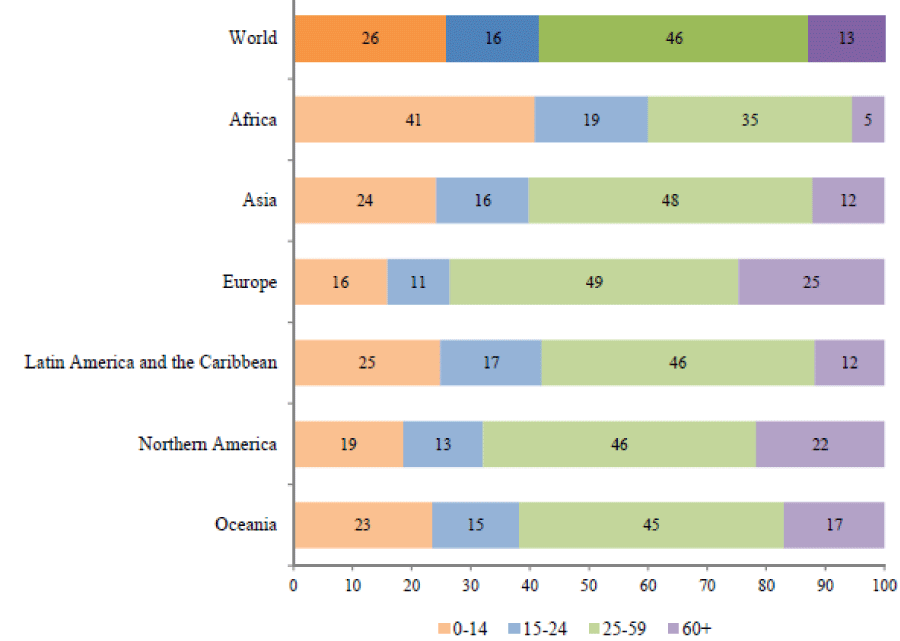
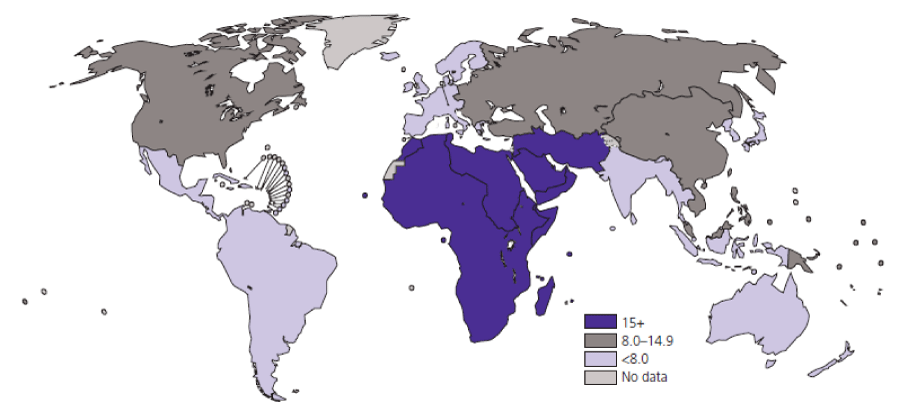

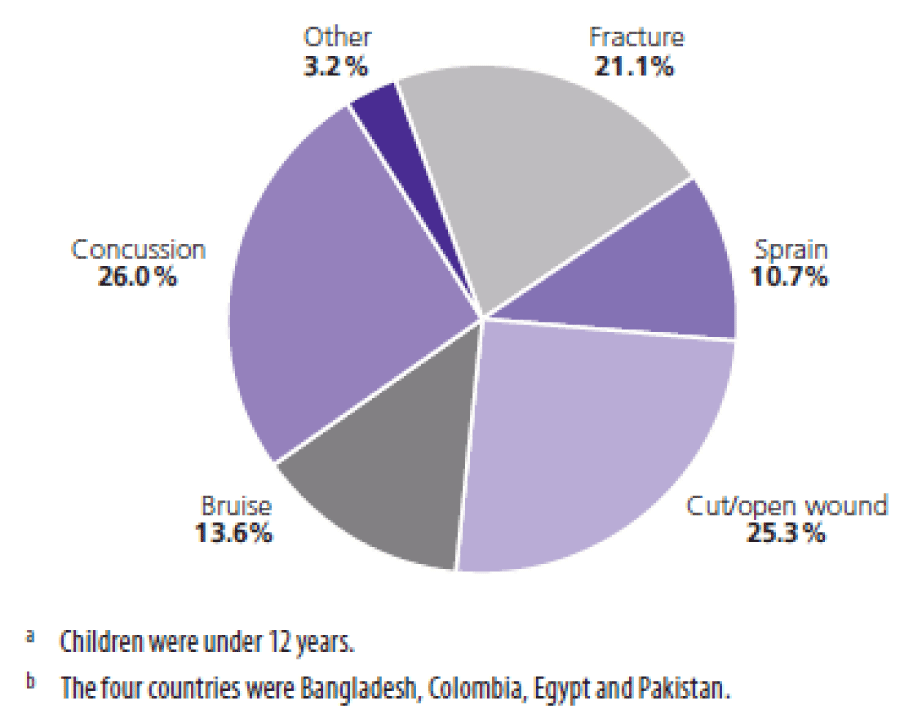
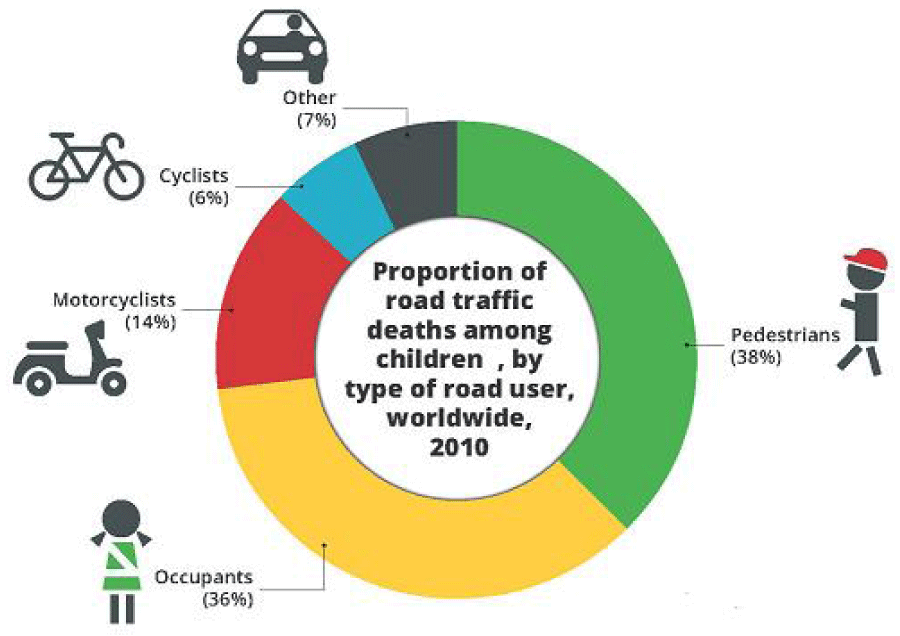
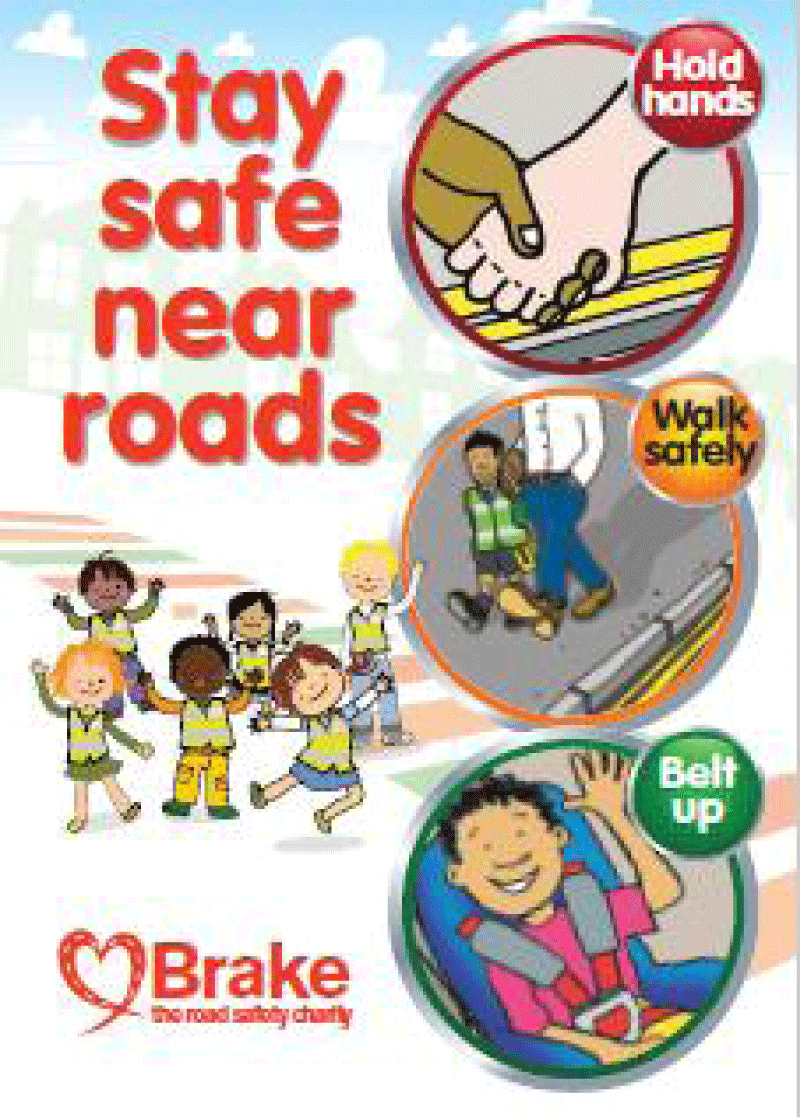
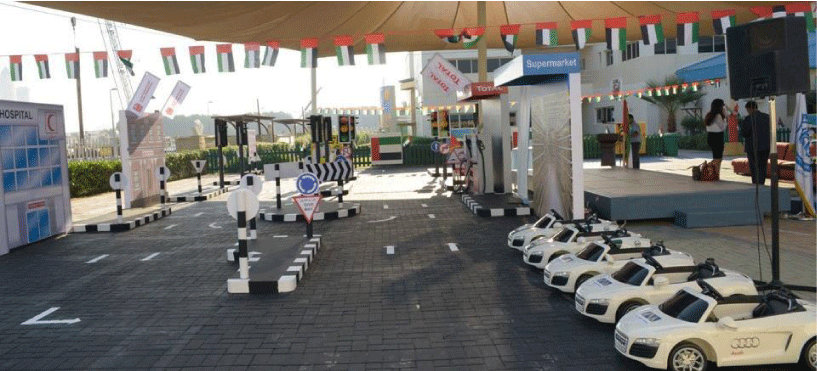

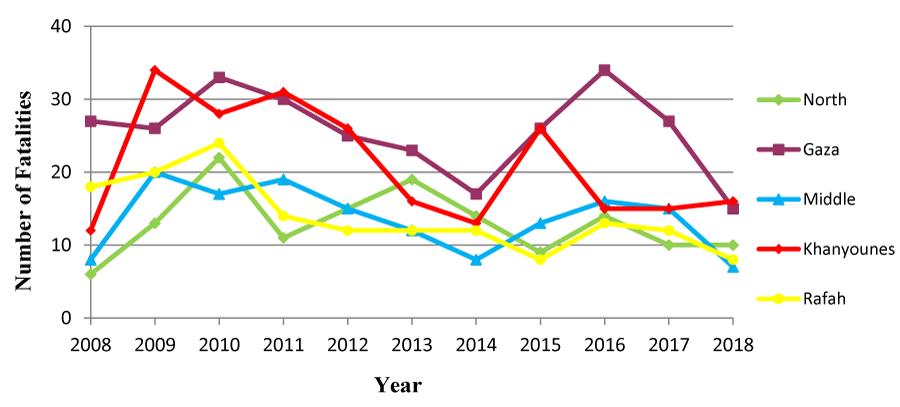
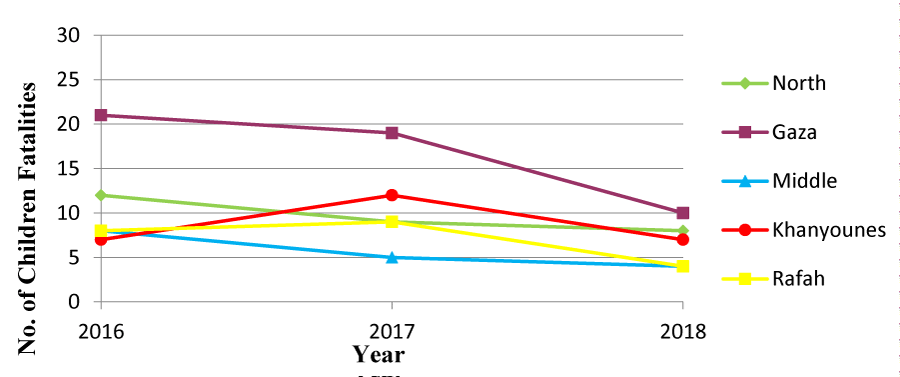
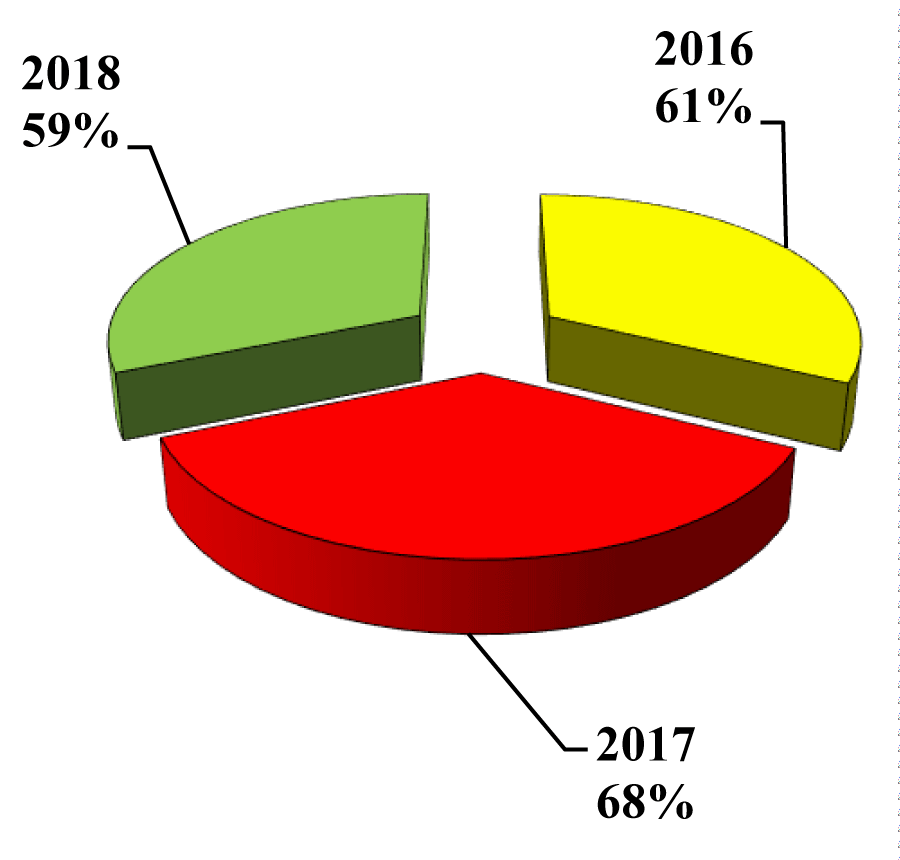

 Save to Mendeley
Save to Mendeley
